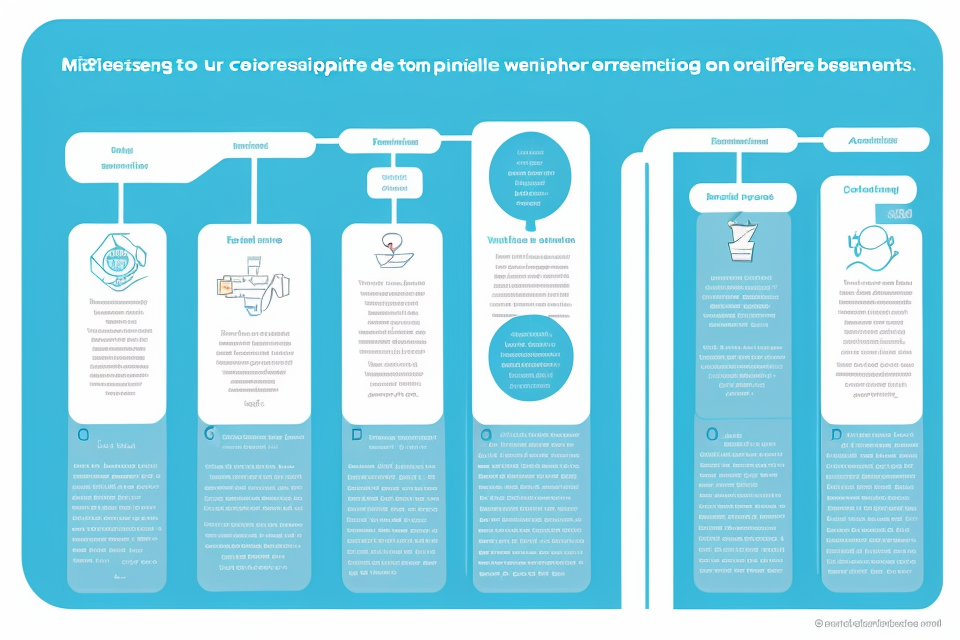
Compatibility issues can be a major challenge when it comes to integrating different systems, software, or technologies. These issues can arise due to a variety of reasons, such as differences in programming languages, data formats, or operating systems. For instance, a web application developed using JavaScript may not be compatible with a browser that only supports older versions of the language. In such cases, businesses may face difficulties in streamlining their operations, leading to wasted time and resources. However, with the right strategies and approaches, these challenges can be overcome, ensuring a seamless integration of different technologies and systems. This article explores some of the common examples of compatibility issues and provides insights into how businesses can navigate these challenges.
Understanding Compatibility Issues
Common Examples of Compatibility Problems
Incompatible software versions
Incompatibility between software versions can cause significant issues for users who rely on specific software to perform their tasks. This may occur when upgrading to a newer version of the software, or when attempting to use multiple versions of the same software. This can result in loss of functionality, data corruption, or even complete system failure.
Differences in operating systems
Differences in operating systems can also cause compatibility issues. For example, software developed for Windows may not be compatible with Mac or Linux operating systems, or vice versa. This can result in difficulties accessing certain features or programs, or even prevent the software from running at all.
Compatibility issues with hardware
Compatibility issues with hardware can also be a significant challenge. For example, a printer may not be compatible with a specific computer or operating system, resulting in the inability to print documents. Additionally, some hardware may require specific drivers or software to function properly, which may not be available for certain systems.
Inconsistent file formats
Inconsistent file formats can also pose a challenge for compatibility. Different software programs may use different file formats, and some may not be able to read or write files in other formats. This can result in data loss or corruption, or difficulty sharing files between different systems.
The Impact of Compatibility Issues on Businesses
Compatibility issues can have a significant impact on businesses, leading to decreased efficiency, loss of productivity, wasted resources, and compromised data security. These challenges can arise when different software applications, systems, or devices are not able to work together seamlessly, resulting in a lack of interoperability.
Loss of productivity: When employees are unable to access or use the tools they need to complete their work, it can lead to a loss of productivity. This can occur when different software applications are not compatible, making it difficult for employees to share data or collaborate effectively.
Decreased efficiency: Compatibility issues can also lead to decreased efficiency, as employees may need to spend more time manually transferring data between different systems or troubleshooting compatibility problems. This can be especially problematic in industries where time is of the essence, such as healthcare or finance.
Wasted resources: In addition to lost productivity, compatibility issues can also result in wasted resources. This can include the cost of purchasing and maintaining multiple systems or devices that are not compatible, as well as the cost of training employees on how to use different software applications.
Compromised data security: Compatibility issues can also pose a security risk, as data may need to be transferred between different systems or devices in an insecure manner. This can lead to data breaches or other security incidents, which can have serious consequences for businesses.
Overall, it is clear that compatibility issues can have a significant impact on businesses, and it is important for organizations to have strategies in place to overcome these challenges and ensure a seamless integration of different software applications, systems, and devices.
Assessing Compatibility Requirements
Identifying Potential Compatibility Issues
- One of the first steps in identifying potential compatibility issues is to conduct a thorough assessment of the current systems that will be integrated. This includes evaluating the hardware, software, and network infrastructure of each system to identify any potential points of failure or incompatibility.
- Another key step in identifying potential compatibility issues is to identify areas of the systems that are likely to cause problems when integrated. This may include differences in data formats, communication protocols, or security measures.
- Gathering requirements from stakeholders is also crucial in identifying potential compatibility issues. This includes understanding the needs and expectations of all parties involved in the integration, as well as identifying any specific requirements or constraints that may impact the compatibility of the systems.
By conducting a thorough assessment of current systems, identifying areas of potential compatibility issues, and gathering requirements from stakeholders, organizations can better understand the challenges they may face when integrating systems and develop strategies to overcome them.
Developing a Compatibility Requirements Document
Developing a Compatibility Requirements Document is a crucial step in assessing compatibility requirements. This document outlines the identified compatibility issues, defines the desired state of compatibility, and prioritizes compatibility requirements. It serves as a reference point for the entire project team, ensuring that everyone is on the same page when it comes to compatibility requirements.
To develop a Compatibility Requirements Document, the following steps should be taken:
- Documenting the Identified Compatibility Issues
The first step in developing a Compatibility Requirements Document is to document all identified compatibility issues. This includes listing out all the issues that need to be addressed, such as incompatible file formats, different operating systems, and differing data standards. It is important to provide a detailed description of each issue, including the specific data or files affected and the potential impact on the project. - Defining the Desired State of Compatibility
The next step is to define the desired state of compatibility. This involves specifying the desired outcome for each identified compatibility issue. For example, if the issue is incompatible file formats, the desired state of compatibility may be to have all files in a single, standard format that can be easily shared between systems. This helps to set clear goals for the project team and ensures that everyone is working towards the same outcome. - Prioritizing Compatibility Requirements
Once the identified compatibility issues and desired state of compatibility have been defined, the next step is to prioritize the compatibility requirements. This involves ranking the compatibility issues in order of importance, based on their potential impact on the project. For example, an issue that could result in a significant delay in project completion may be given a higher priority than an issue that has a lesser impact.
By following these steps, a Compatibility Requirements Document can be developed that provides a clear roadmap for addressing compatibility issues. This document serves as a valuable resource for the project team, helping to ensure that compatibility requirements are met and that the project is completed successfully.
Developing a Compatibility Strategy
Implementing Best Practices for Compatibility
Regular software updates and maintenance
Regular software updates and maintenance are critical to ensuring compatibility between different systems. By regularly updating software, organizations can address any compatibility issues that may arise and ensure that all systems are running the latest version of the software. This helps to ensure that all systems are functioning optimally and can communicate effectively with one another.
Standardizing on common hardware and software platforms
Standardizing on common hardware and software platforms is another key best practice for ensuring compatibility. By using standardized hardware and software platforms, organizations can ensure that all systems are using the same components and can communicate effectively with one another. This helps to reduce the risk of compatibility issues and ensures that all systems are running smoothly.
Encouraging the use of open standards
Encouraging the use of open standards is also important for ensuring compatibility between different systems. Open standards are publicly available specifications that can be used by anyone, and they help to ensure that different systems can communicate effectively with one another. By encouraging the use of open standards, organizations can ensure that all systems are using compatible protocols and can communicate effectively with one another. This helps to reduce the risk of compatibility issues and ensures that all systems are running smoothly.
Leveraging Technology Solutions
When it comes to overcoming compatibility challenges, technology solutions play a crucial role in facilitating a seamless integration. Here are some ways in which organizations can leverage technology to overcome compatibility issues:
Utilizing compatibility tools and software
One of the most effective ways to overcome compatibility challenges is by utilizing specialized tools and software that are designed to bridge the gap between different systems. These tools can help ensure that data is transmitted accurately and can help prevent errors and inconsistencies. For example, companies can use file transfer protocol (FTP) clients to transfer files between different systems, or they can use software that converts data from one format to another.
Investing in cloud-based solutions
Cloud-based solutions offer a number of benefits when it comes to overcoming compatibility challenges. For one, they provide a centralized location for storing and accessing data, which can help ensure that everyone is working with the same information. Additionally, cloud-based solutions often offer built-in compatibility features that can help ensure that data is transmitted accurately and consistently. Finally, cloud-based solutions are often more flexible and scalable than traditional on-premises solutions, which can help organizations adapt to changing circumstances and requirements.
Implementing virtualization technologies
Virtualization technologies can also help organizations overcome compatibility challenges. By creating virtual versions of hardware and software, virtualization technologies can help ensure that different systems can work together seamlessly. For example, companies can use virtualization technologies to create virtual servers that can host different applications and services, or they can use virtualization technologies to create virtual desktops that can be accessed from anywhere. By implementing virtualization technologies, organizations can create a more flexible and agile IT infrastructure that is better equipped to handle compatibility challenges.
Implementing and Monitoring Compatibility Solutions
Developing an Implementation Plan
Defining roles and responsibilities
One of the key elements of developing an implementation plan is defining the roles and responsibilities of each team member involved in the integration process. This ensures that everyone understands their individual tasks and how they fit into the overall project. It is important to assign roles based on the strengths and expertise of each team member to ensure that everyone is working effectively and efficiently.
Setting timelines and milestones
Setting realistic timelines and milestones is crucial for ensuring that the integration process stays on track. This involves breaking down the project into smaller, manageable tasks and setting deadlines for each one. Regular check-ins and progress updates can help keep the team on track and identify any potential delays or roadblocks early on.
Identifying potential roadblocks and contingencies
It is important to anticipate potential roadblocks and contingencies that may arise during the integration process. This involves identifying potential risks and developing contingency plans to mitigate them. It is also important to have a clear communication plan in place to ensure that all team members are aware of any potential roadblocks and how to address them. By anticipating and planning for potential issues, the team can minimize disruptions and keep the integration process moving forward smoothly.
Monitoring and Evaluating Compatibility
When it comes to implementing and monitoring compatibility solutions, there are several key steps that organizations can take to ensure that their solutions are working effectively. One of the most important steps is to regularly test for compatibility issues. This involves testing the system to identify any potential issues that may arise due to differences in operating systems, hardware, or software versions.
Another important step is to track progress against the desired state. This involves monitoring the system to ensure that it is performing as expected and making any necessary adjustments to the compatibility strategy as needed.
In addition to these steps, organizations can also take the following actions to monitor and evaluate compatibility:
- Conduct regular compatibility audits to identify any issues that may have arisen since the last audit.
- Implement real-time monitoring tools to detect any compatibility issues as they occur.
- Establish a process for reporting and resolving compatibility issues quickly and efficiently.
- Work with vendors and partners to ensure that their products and services are compatible with the organization’s systems.
By following these steps, organizations can ensure that their compatibility solutions are working effectively and can make any necessary adjustments to maintain a seamless integration.
Continuous Improvement
Encouraging Feedback from End-Users
One of the most effective ways to identify areas for improvement in a compatibility strategy is to solicit feedback from end-users. By gathering feedback from those who are directly impacted by the compatibility solutions, organizations can gain valuable insights into the effectiveness of their approach and identify areas where improvements can be made.
Identifying Areas for Improvement
In addition to gathering feedback from end-users, organizations should also proactively identify areas for improvement in their compatibility strategy. This may involve conducting regular audits of the system to identify any potential issues or challenges that may arise.
Regularly Reviewing and Updating the Compatibility Strategy
To ensure that the compatibility strategy remains effective over time, it is important to regularly review and update the approach as needed. This may involve revising the compatibility standards, updating the tools and technologies used to support compatibility, or adjusting the process for identifying and addressing compatibility issues.
By continuously monitoring and improving their compatibility strategy, organizations can ensure that they are able to overcome any challenges that may arise and achieve a seamless integration of their systems.
FAQs
1. What are some common compatibility issues that can arise in integration?
Compatibility issues can arise when integrating different systems or technologies that were not designed to work together. Some common examples include data format incompatibilities, such as different date formats or encoding schemes, and technical compatibility issues, such as differences in programming languages or protocols.
2. How can compatibility issues impact business operations?
Compatibility issues can have a significant impact on business operations, causing delays, inefficiencies, and errors. For example, if two systems are not compatible, data may need to be manually entered or transferred between systems, which can be time-consuming and prone to errors. Additionally, incompatible systems may not provide the necessary information or functionality, leading to missed opportunities or poor decision-making.
3. What strategies can be used to overcome compatibility challenges?
There are several strategies that can be used to overcome compatibility challenges, including using standardized data formats, implementing data mapping or translation tools, and utilizing middleware or APIs to connect different systems. Additionally, it may be helpful to work with experienced integration specialists who can help identify and resolve compatibility issues.
4. How can businesses ensure a seamless integration?
To ensure a seamless integration, businesses should take a proactive approach to identifying and addressing potential compatibility issues before they become a problem. This may involve conducting thorough assessments of existing systems and technologies, developing a comprehensive integration plan, and working with experienced integration specialists who can provide guidance and support throughout the process. By taking these steps, businesses can minimize the risk of compatibility issues and ensure a smooth, successful integration.


